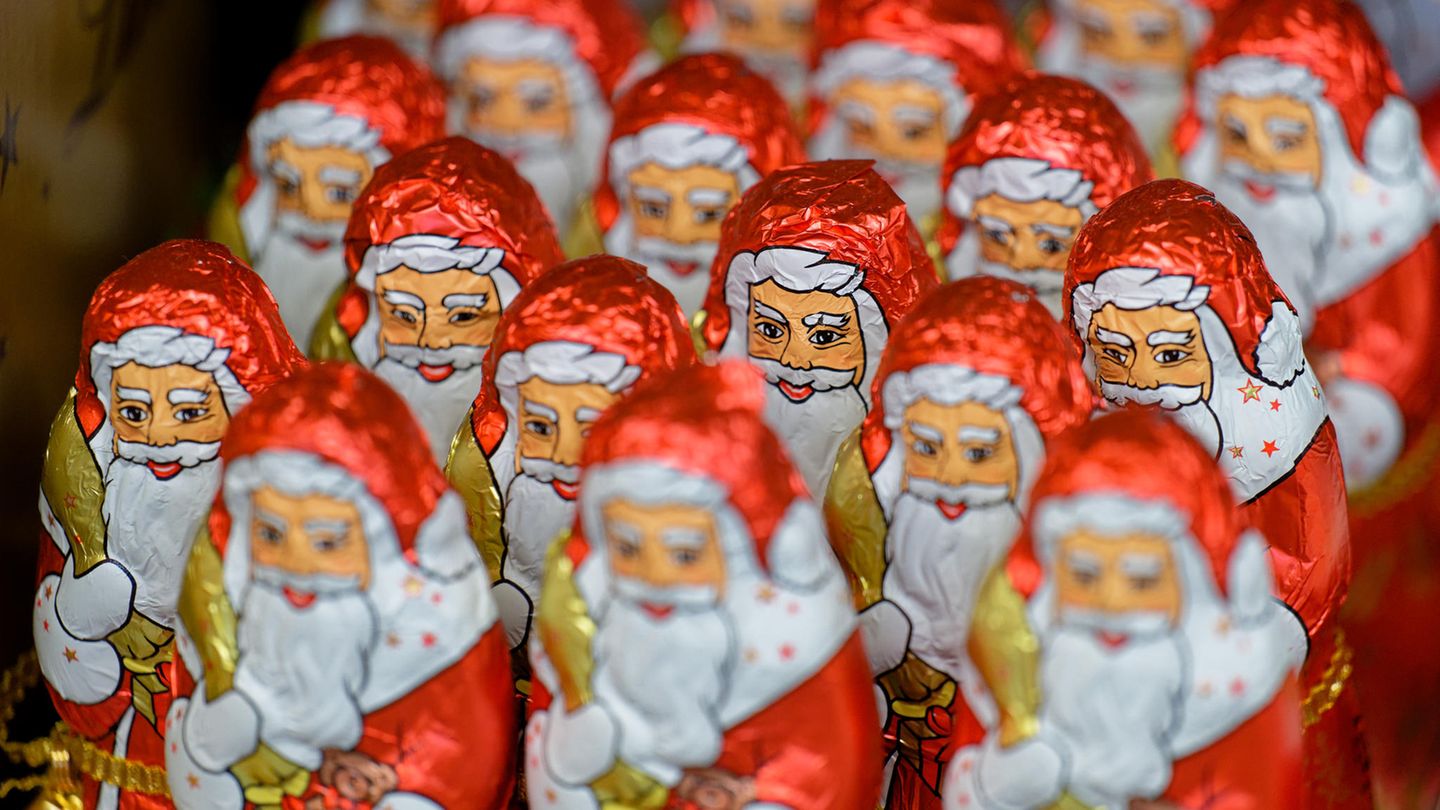Price explosion
Why is chocolate Santa Claus so expensive?
Copy the current link
The chocolate Santa Claus costs up to 50 percent more in stores this year. But are high cocoa prices really the only thing to blame for this?
There are still people who are completely unmoved by the hype surrounding Dubai chocolate. Who want to put a normal chocolate Santa Claus in Santa’s shoes instead of sticky luxury chocolate for 15 euros or more. But even the classic Christmas sweets on the shelf sometimes don’t come cheap. Because the prices for chocolate Santa Clauses have risen significantly in some cases.
According to a price comparison by the payment service provider SumUp, a Santa Claus from Lindt costs 7 percent more and one from Kinder-Schokolade costs 22 percent more than last year. A sample of fine cocoa from the Berlin chocolate manufacturer Rausch costs a whopping 38 percent more – and therefore a total of almost ten euros. The price comparison portal Smhaggle even found chocolate Santa Clauses in stores that are 50 percent more expensive than a year ago.
The price increase doesn’t just affect Santa Claus. Chocolate Advent calendars and normal chocolate bars have also become more expensive. For example, Ritter Sport bars suddenly cost 30 to 40 cents more in many supermarkets, reports the Hamburg consumer advice center. When it comes to chocolate Santas, the true price increase only becomes apparent when you look back further than a year, according to consumer advocates. The Milka Santa Claus has become 55 percent more expensive since 2019, the one from Lindt by 35 percent and that from Kinder Chocolate by 31 percent.
Not only chocolate Santa Claus is affected
One reason for the price increase for chocolate products is obvious: import prices for cocoa have exploded this year. In October 2024, cocoa beans were almost twice as expensive as a year ago (plus 91.5 percent), reports the Federal Statistical Office. Cocoa mass as well as cocoa butter, cocoa fat and cocoa oil were even 114.7 percent more expensive. One of the reasons for the historically high cocoa prices was poor harvests in important growing countries in West Africa.
But can the price explosion really only be blamed on cocoa prices, even if they are historically high? The deceptive packaging experts at the Hamburg Consumer Center have their doubts. Manufacturers always like to mention rising raw material prices in order to arouse understanding among customers. Consumer advocates emphasize that cocoa only accounts for around seven percent of the price of a bar of chocolate. In addition, chocolate prices have previously risen in phases in which the price of cocoa was stable.
Consumer advocates therefore suspect other reasons. “Strategic considerations about threshold prices, price structures and the market environment (e.g. the price gap to competitors) as well as the analysis of consumers’ willingness to pay probably have a much greater influence.” Large manufacturers such as Mondelez (Milka), Nestlé, Ferrero and Ritter Sport had great market power here. Ritter Sport put it this way in a statement to the groceries newspaper: “Our new, non-binding price recommendations in connection with the sales price increase are based on the willingness of our loyal users to pay under these new market conditions.”
The Federal Association of the German Confectionery Industry points out that manufacturers also have other concerns in addition to cocoa prices. “Companies in Germany are groaning under cost burdens for important raw materials, personnel, energy and bureaucracy,” says association head Carsten Bernoth. The German confectionery industry will produce two percent fewer chocolate Santa Clauses and Santa Clauses this year than last year, with exports to other countries being particularly affected. “The economic crisis in Germany doesn’t stop at the popular chocolate Santa Clauses,” says Bernoth.
Source: Stern




